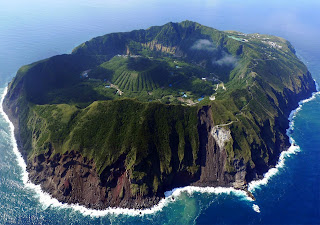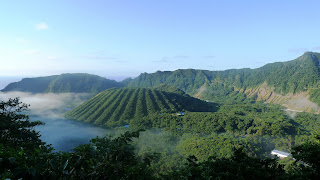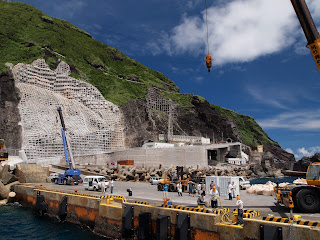Aogashima is a small, tropical volcanic island in the Philippine Sea, under the administration of Tokyo despite being located some 358 kilometers away from the country’s capital. It is the southernmost and the most isolated inhabited island of the Izu archipelago. The island itself is a giant volcanic crater, and within that crater there’s another, smaller volcano. Aogashima is still considered an active Class-C volcano though it last erupted in the 1780′s. When last erupted it killed nearly half of the island’s population and forced the remaining inhabitants to flee. It took just fifty years for the people to return. Today, some 200 brave villagers live on the island.
Aogashima is a submarine volcano that has emerged from the sea and is part of a large crater whose outer rim height ranges from 200 m to 420 m in height. It’s believed that the island was formed by the overlapping remnants of at least four submarine calderas. Aogashima consists of the rims of the inner and outer craters. The southern coast rises to a sharp ridge forming one edge of a caldera named Ikenosawa with a diameter of 1.5 km. The caldera is occupied by a secondary cone named Maruyama, which is still emitting geothermal steam around an area where no plants are evident. Otonbu, the peak of the rim of the outer crater at a height of 432 meters above sea level, is the highest spot in the island. It commands a panoramic view of the entire volcano in the Pacific Ocean.
Aogashima Volcano
Aogashima Volcano
Aogashima Volcano
Aogashima Volcano
Aogashima Volcano






سبحان الله
ReplyDelete